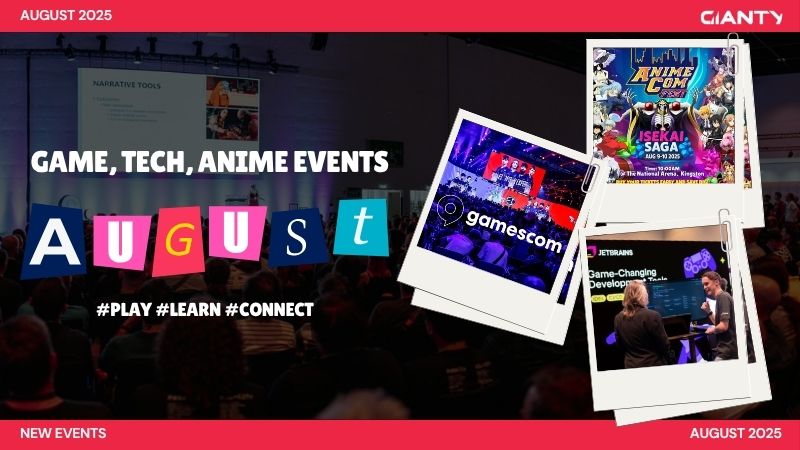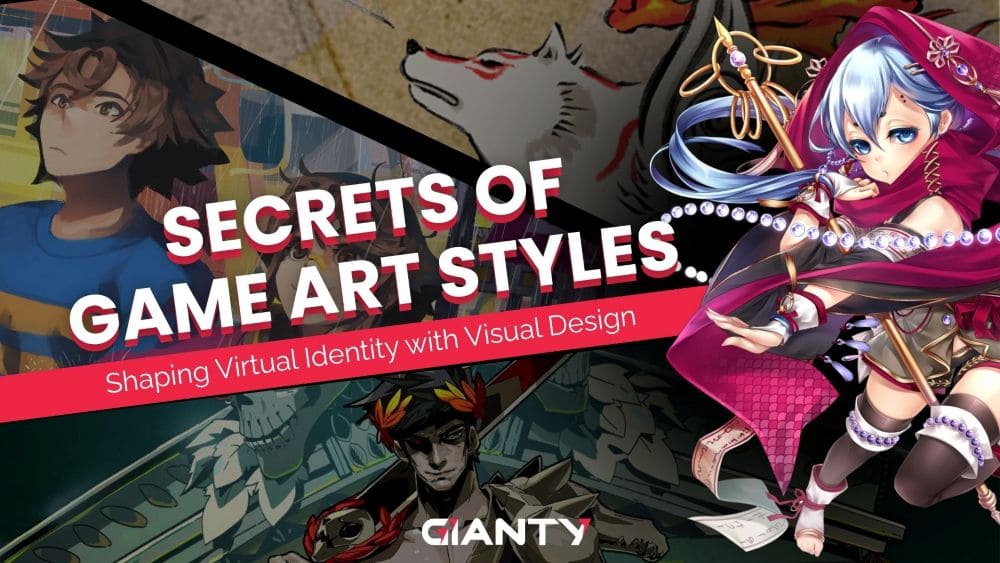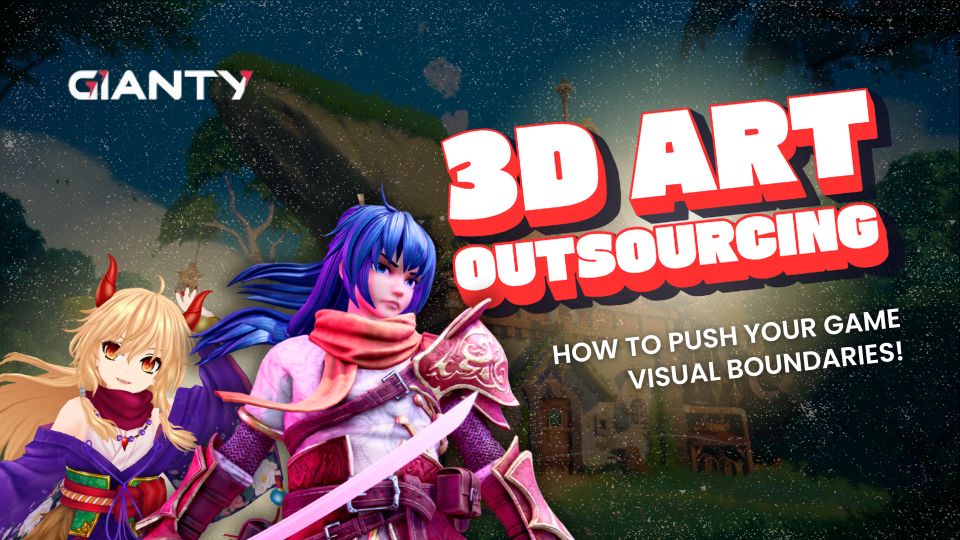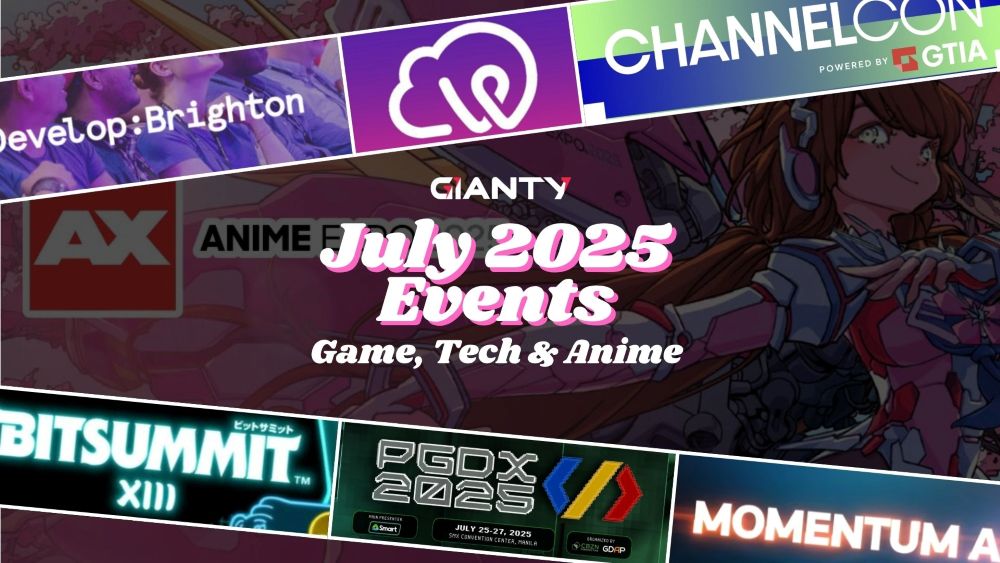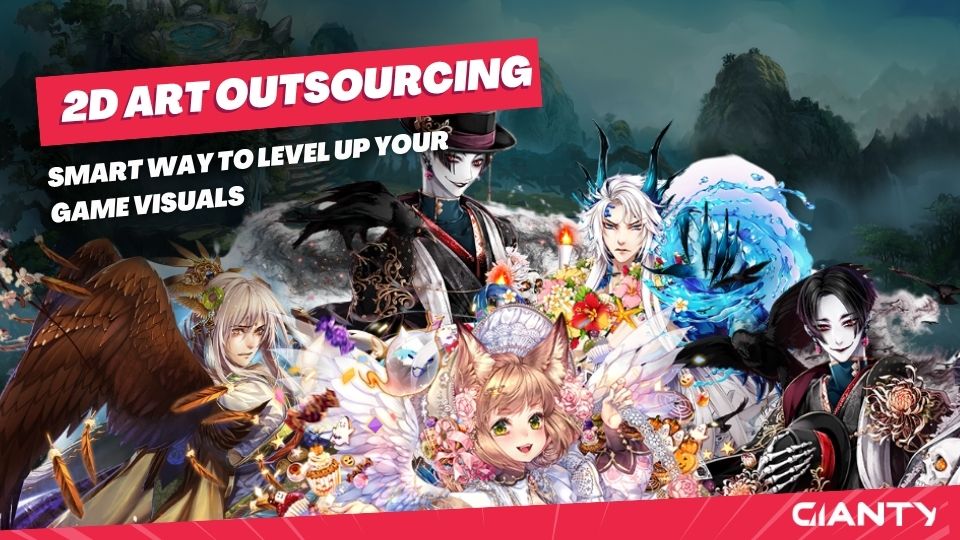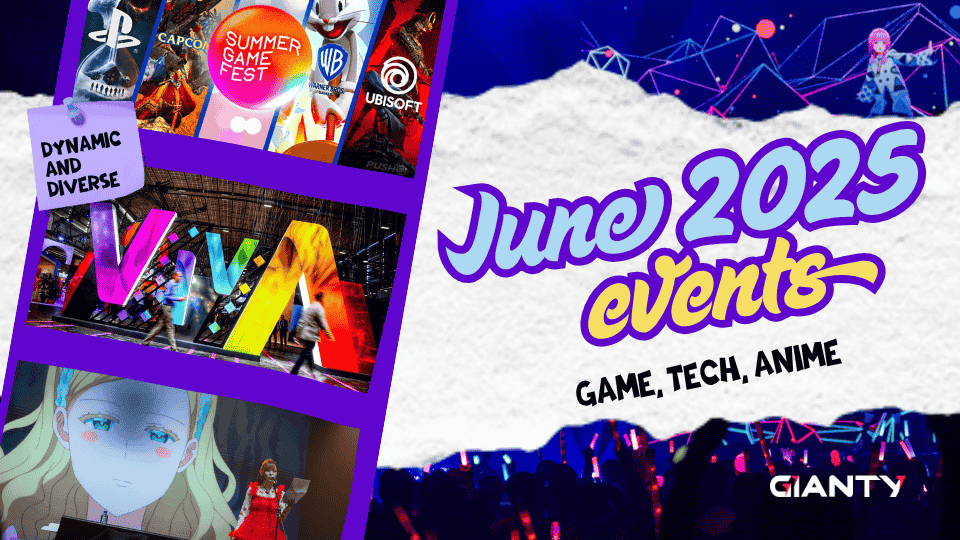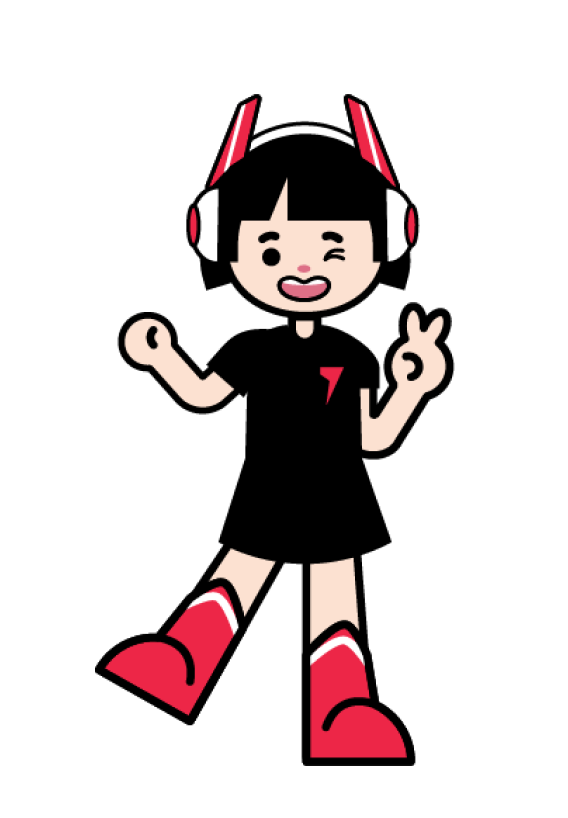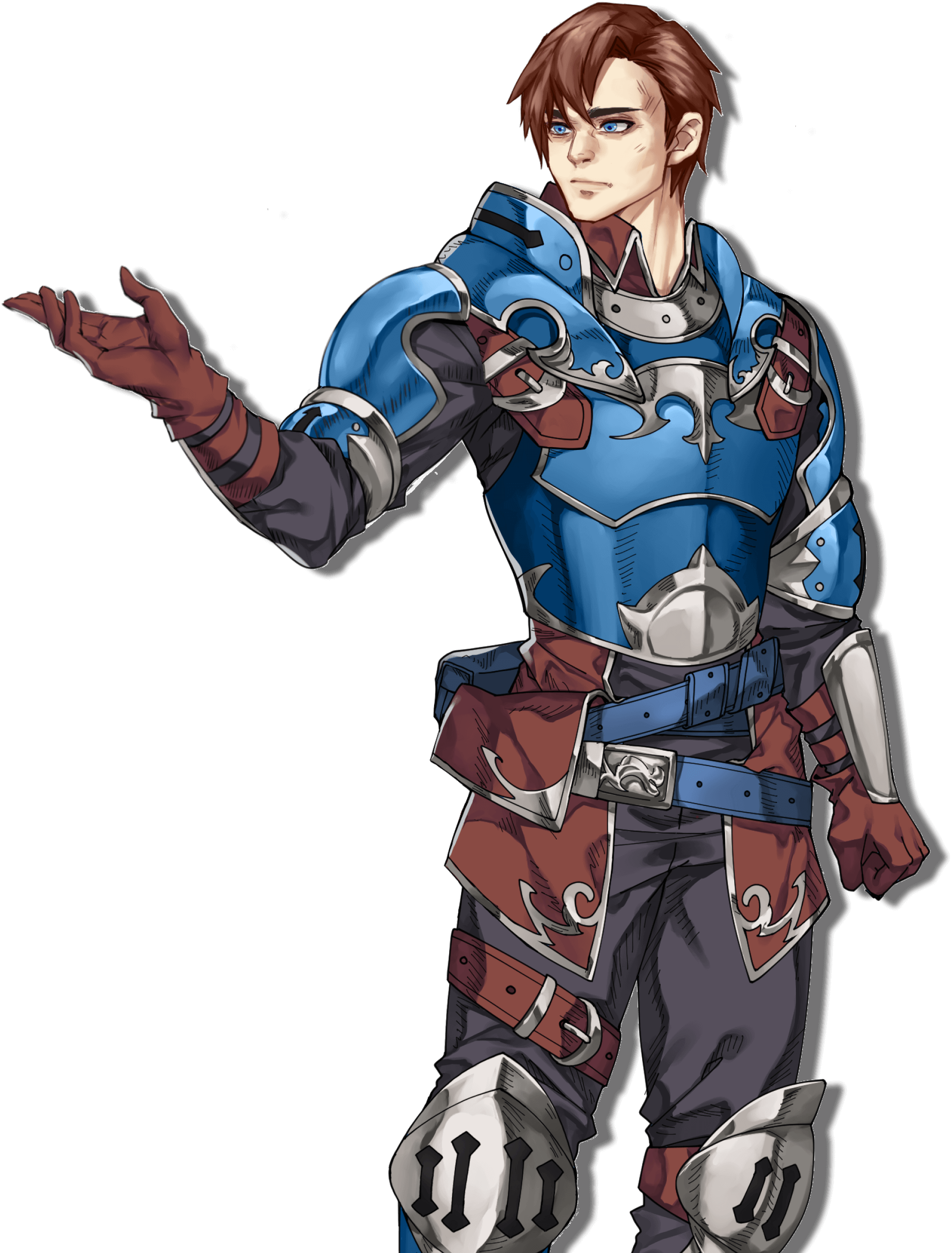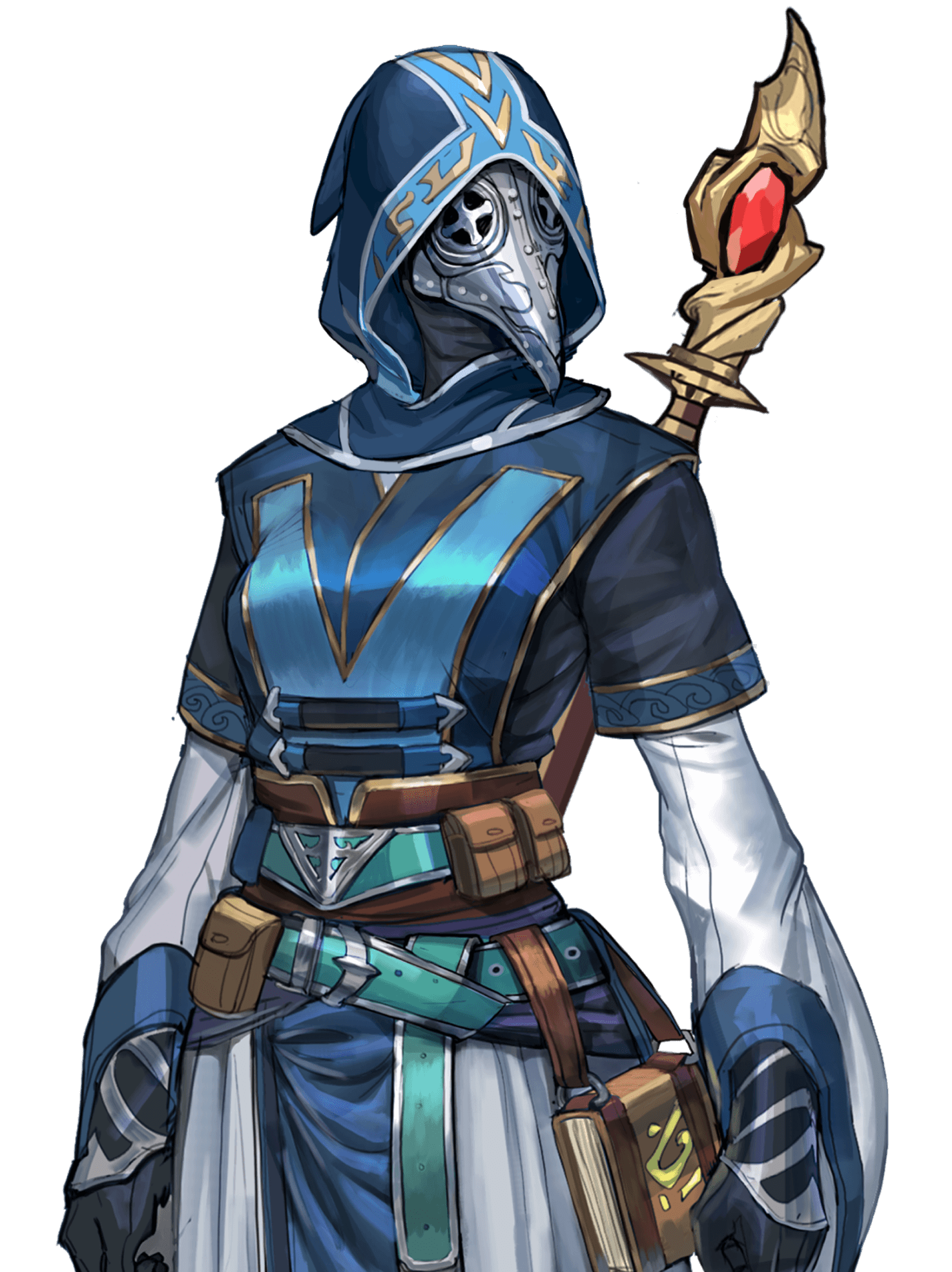Every modern game, from indie to AAA, relies on thousands of carefully crafted 3D game assets. Characters, props, vehicles, weapons, and environments are more than decorative elements; they are the foundation of visual storytelling and player immersion.
Yet, creating these assets in-house isn’t always practical. As production pipelines become more complex and budgets tighten, many studios are turning to 3D game asset outsourcing as a smarter, faster, and more flexible solution.
In this guide, we’ll explore how 3D game assets are created, the factors that influence their pricing, the realistic costs you can expect in 2025, and how to collaborate effectively with a professional 3D game asset studio to achieve quality and consistency without compromising your schedule.
What Are 3D Game Assets?
A 3D game asset is any model, texture, or animation built to function inside a real-time game engine such as Unity, Unreal Engine, or Godot. These assets are the “building blocks” of your world – used to populate scenes, tell stories, and guide player experience.
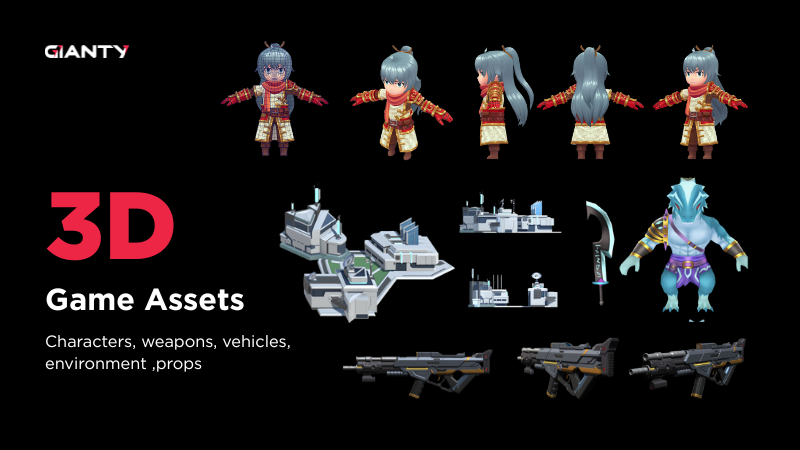
3D game assets include:
- Characters and creatures – fully rigged and textured for animation
- Weapons and equipment – detailed props with functional designs
- Vehicles and mechs – often complex, hard-surface models
- Environment modules – walls, trees, rocks, architecture, terrain sets
- Props and collectibles – small items that add realism and depth
Unlike static 3D art for film or advertising, game-ready assets must meet specific performance constraints. They need clean topology, balanced polygon counts, optimized UVs, and realistic materials so the game runs smoothly on any device: PCs to mobile phones.
Every 3D model in your game must not only look beautiful but also run efficiently, blending artistry with technical precision.
3D Game Asset Production Pipeline: How Studios Build Game-Ready Models
Behind every polished model you see in a finished game lies a carefully structured workflow. A professional 3D game asset production pipeline ensures consistency, technical accuracy, and art quality. While each studio may adapt its own tools or methods, most professional pipelines or GIANTY’s pipeline include these essential stages:
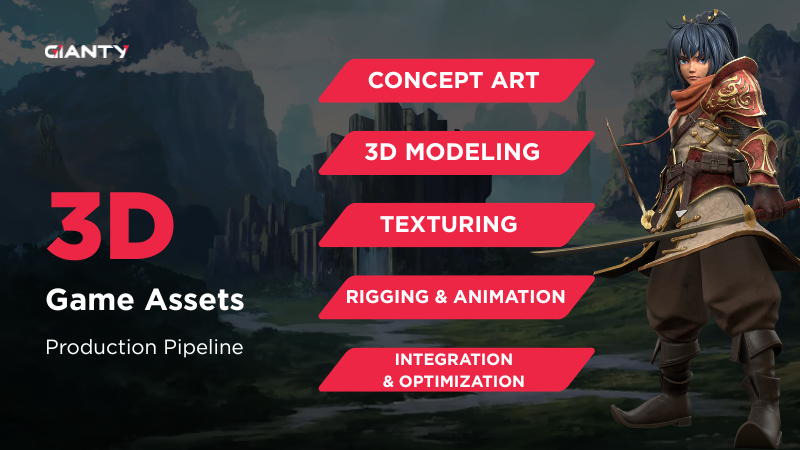
1. Concept & Reference Collection
Every great 3D asset starts with a strong concept. This stage is where ideas take shape.
The art team gathers references, sketches, and moodboards to define the overall. Then sketch the overall look, proportions, and design language of the asset. Concept art ensures that the creative direction matches the game’s world, gameplay needs, and art style before any modeling begins.
2. 3D Modeling (High-Poly & Low-Poly Creation)
Once the concept is approved, modelers bring it into 3D space. The balance between visual fidelity and technical performance is the hallmark of professional asset modeling.
- A high-poly model is sculpted in tools (Blender, Maya, 3ds Max, ZBrush) to capture fine details such as scratches, bevels, and fabric folds.
- A low-poly version is then created through retopology to ensure the asset performs efficiently during gameplay while maintaining all key visual elements from the high-poly model.
3. Texturing
Textures bring the model to life. Artists unwrap UV maps and apply layers such as base color, roughness, metalness, and normal maps to achieve a believable look that fits the game’s art direction. At this point, assets are tested under various lighting setups to ensure consistency across the game world.
Good texturing adds realism while keeping file sizes optimized for game performance.
4. Rigging & Animation (If Required)
If the asset needs movement, such as a character, creature, or mechanical object, it goes through rigging and animation.
Rigging artists build a digital skeleton and bind it to the mesh, allowing the model to deform naturally. Animators then create keyframe animations or motion capture sequences for actions like walking, attacking, or reloading.
5. Engine Integration & Optimization
Finally, the finished asset is imported into the target game engine (Unity, Unreal, or proprietary tools).
Technical artists check scale, pivot points, materials, and shaders to ensure the asset performs correctly under engine lighting and gameplay conditions.
This stage often includes LOD (Level of Detail) setup, collision meshes, and lightmap adjustments to make sure that the asset runs smoothly across different platforms, from PC to mobile.
How Much Does 3D Game Asset Production Cost in 2025?
This is the part every producer cares about – the budget. Pricing for 3D assets in 2025 depends on the asset type, style, and complexity. A photorealistic hero character for a AAA game naturally costs far more than a stylized prop designed for mobile. The more detail, interactivity, and polish required, the higher the price tag.
Here’s a general cost overview based on current industry averages:
- Simple Props: $120 – $2,400
- Stylized Characters: $360 – $8,400
- Complex Environments: $1,200 – $24,000
- Game-Ready Weapons: $1,500 – $3,000
If you need more details or a custom quote, email us at contact@gianty.com with your project information, and our team will get back to you as soon as possible.
Key Factors Influencing the Cost of 3D Game Assets
The cost of 3D game assets in 2025 depends on more than just how “big” or “small” an asset appears. Each model is a combination of artistry, technology, and production time. Understanding the factors below helps studios set realistic budgets and make the most of their outsourcing partnerships.
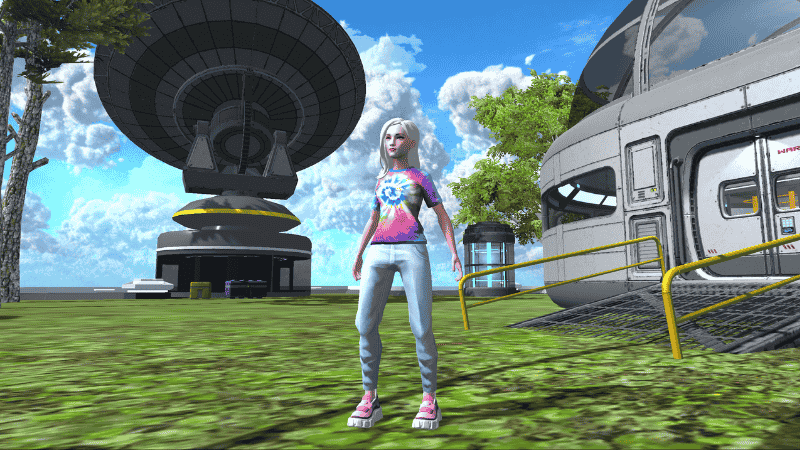
- Complexity of Design: Simple props like daggers or crates may take just a few days, while vehicles, robots, or buildings can take weeks. More detail and parts mean more time and higher costs.
- Texturing Style: Hand-painted textures need artistic care, while realistic PBR textures require multiple maps, like color, roughness, and normal. More maps and testing increase both time and budget.
- Animation and Rigging: Static assets are cheaper, but once movement is needed, like folding wings or rotating parts, rigging and animation testing add extra work and cost.
- Platform Requirements: Mobile assets need low-poly models and small textures, while PC and console games demand detailed models and complex shaders. Supporting multiple platforms increases production time and cost.
Planning Your Art Budget
Setting a realistic 3D game asset budget starts with aligning your project’s scope, visual style, and player expectations.
- For indie games, efficiency is key. Smaller projects often focus on stylized visuals and reuse a compact set of assets: characters, props, or environments with slight variations to keep costs lean.
- Mid-sized studios typically need a wider variety of assets: environments, weapons, vehicles, and characters. A balanced budget helps maintain visual diversity without letting production scope spiral out of control.
- AAA productions operate on a completely different scale. These games demand dozens of hero characters, cinematic environments, detailed vehicles, and hundreds of supporting props, often pushing the art budget into the hundreds of thousands.
Whatever your scale, it’s crucial to define your hero assets early. These are the centerpiece models players will see up close, and they deserve more time, polish, and investment than background or filler assets.
Tips to Balance Cost and Quality in 3D Game Asset Production
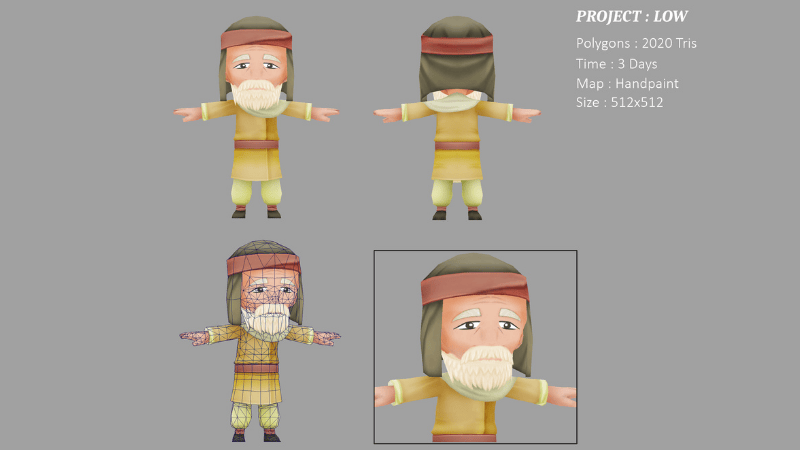
- Bundle assets: Order sets or variations together to cut per-asset costs.
- Prioritize visuals: Spend more on assets players see most; simplify background items.
- Go modular: Reuse parts across props, environments, or characters.
- Outsource smartly: Work with experienced studios for optimized, ready-to-use models.
- Plan early: Define quality targets and budget before production starts.
FAQs
- Is it cheaper to hire a freelancer or an outsourcing company? Who’s better for 3D game asset outsourcing?
Freelancers are often cheaper for small, one-off tasks like a single prop or character. However, outsourcing companies offer full production pipelines, quality control, consistent communication, and scalability. For complex or long-term projects, a professional 3D game asset outsourcing partner is usually the more reliable and cost-effective choice overall.
- What information should I provide to a 3D artist or outsourcing partner for an accurate quote?
To get a precise estimate, share details like your art style, polycount limits, reference images, technical specs (engine, format, textures), and animation needs. The clearer your brief, the faster the studio can provide an accurate timeline and cost.
- What affects 3D game asset pricing the most?
Key factors include complexity, texturing style, animation requirements, platform optimization, and the number of revisions. For example, a stylized low-poly prop may take days, while a detailed animated character could take weeks.
- How long does it take to create a 3D game asset?
Production time varies widely. Simple props can take 2–3 days, while detailed environments, vehicles, or animated characters may need 2–4 weeks or more. The schedule depends on the project’s scale, complexity, and feedback cycles.
- How do I choose the right 3D art outsourcing company for my project?
Look for a company with experience in your game genre, a strong portfolio, and clear communication practices. Ask about their workflow, QA process, and ability to deliver optimized assets for your target engine (Unreal, Unity, etc.). A good company balances artistry, efficiency, and technical precision.
Bring Your Game World to Life with Expert 3D Asset Production
Every 3D asset from a character’s armor to the smallest prop shapes how players connect with your game. With the right planning, production workflow, and expert team, you can create immersive, optimized worlds without breaking your budget.
At GIANTY, we specialize in professional 3D game asset studio services, helping studios of all sizes bring their visions to life. From concept art to final engine-ready assets, our team delivers consistency, performance, and visual impact across characters, environments, vehicles, and props. See our portfolio here.
If you’re looking for a reliable 3D game asset outsourcing partner who understands both artistic detail and technical precision, get in touch with us soon!



